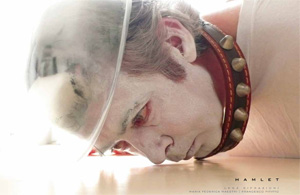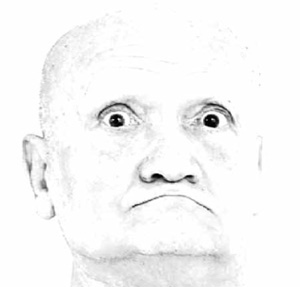HAMLET creazioni | mod_L
Hamlet al Farnese
|
| more {...} |
Hamlet a Colorno
|
| more {...} |
Hamlet a San Secondo
|
| more {...} |
H= 277 lb
|
| more {...} |
H 1 | 2 | 3
|
| more {...} |
H 4 | 5 | 6 Black Widows
|
| more {...} |
|
Introduction | Progetto Hamlet
Hamlet, a free adaptation of Shakespeare's play, directed by Maria Federica Maestri and Francesco Pititto, is performed by a group of “sensitive” actors. Some of them have been the protagonists of Lenz's productions for many years, some of them have spent many years of their lives in the Colorno Mental Institute and are now in the Rehabilitation Therapy Center in Pellegrino Parmense. Over the years these actors have been experimenting their own expressive abilities in an enduring workshop directed by Lenz Rifrazioni in collaboration with the Mental Health and Addiction Department of Parma and Emilia-Romagna Region. The Hamlet project is quite a new frontier for Lenz Rifrazioni who has put at the center of its poetic and aesthetic research the psychic sensitivity of the contemporary actor. Another artistic step, here, after a four year project on Georg Büchner (Woyzeck, Lenz, Leonce and Lena, Danton's Death). Leonce and Lena, a great success through out the whole Emilia-Romagna Region, received the National Prize of Responsible Communication -Aretê- in 2007.
The play-script, after a long linguistic research on the new expressiveness of the “sensitive” actor in contemporary theater, has been re-translated in 14 sequences that evolve around every performer's dramatic status. The structural asymmetry of the text and its perfect dramaturgic unbalance reflect the psychic asymmetry of the performing actors. At first, these performers have embedded the conceptual and thematic knots of the play in their own familiar world, then they have intensively spoken the words of the play during a two year workshop, and have thus come up with their own emotional and unique creative writing. After the success of Rocca dei Rossi in San Secondo in 2010, and the one in the Reggia of Colorno in 2012, Hamlet is now coming to Teatro Farnese (a 17th Century theater) inside the important Palace of the Pilotta in Parma. In 2012, Hamlet staged by Lenz Rifrazioni enters the Global Shakespeares Video & Performance Archive, coordinated by Professor Alexander Huang from the University of Washington who is gathering all the scholarly work on Shakespeare through out the world.
“The dramaturgic design of Hamlet puts at the center of its Shakespearean re-writing what thrusts Hamlet to his tragic destiny, the process of poetic simulation of madness, that is the full truth of fiction. The “sensitive” actors, ghosts that embrace the light of art and beauty, in obscure truth and happy bewilderment, let go of their own sensibility in front of the human monument that the theater of Hamlet is. The actors who are sculpted voice and body, who are keen to the words of love and the gestures of thoughts, who can speak the languages of many lives mingle inside the loving and dismaying scene. The theater that nests in a dimension of future is the place where these greater beings, estranged to the rule, get united in living art. A step ahead for language, that field of superimposed, discomposed signs where all of a sudden intricacy evolves into one clear orientation map. Our research-work is easier for these actors who are gifted with such a plus-sensitivity and who know how to move from difficult and ambiguous formulas to simple results. They slide and glide straight forward to the point. “To be, or not to be, there's the point” says Hamlet. “I here, or I not here...” with imposed assonance and feet grounded in desecrated land. They are being blessed for their nature, their imagination, and their talent. And theater comes back to life for the first time every single time. Right to the point is the answer to the question: listen to me, look at me because I am Beauty. No need for them to get ready, no need to exit their human condition as they come on stage straight from life without loss. We've drawn frescoes from Hölderlin to Kleist, from Calderòn to Büchner, from Shakespeare to Goethe, we've spoken re-structured and new languages, we've re-invented sound, from Shakespeare's blank verse to regular English, we've sang Foscoli's sonnets and once lost Baroque songs. Every possible link brought us to them. They had been there, on our map, since always”.
Francesco Pititto |








